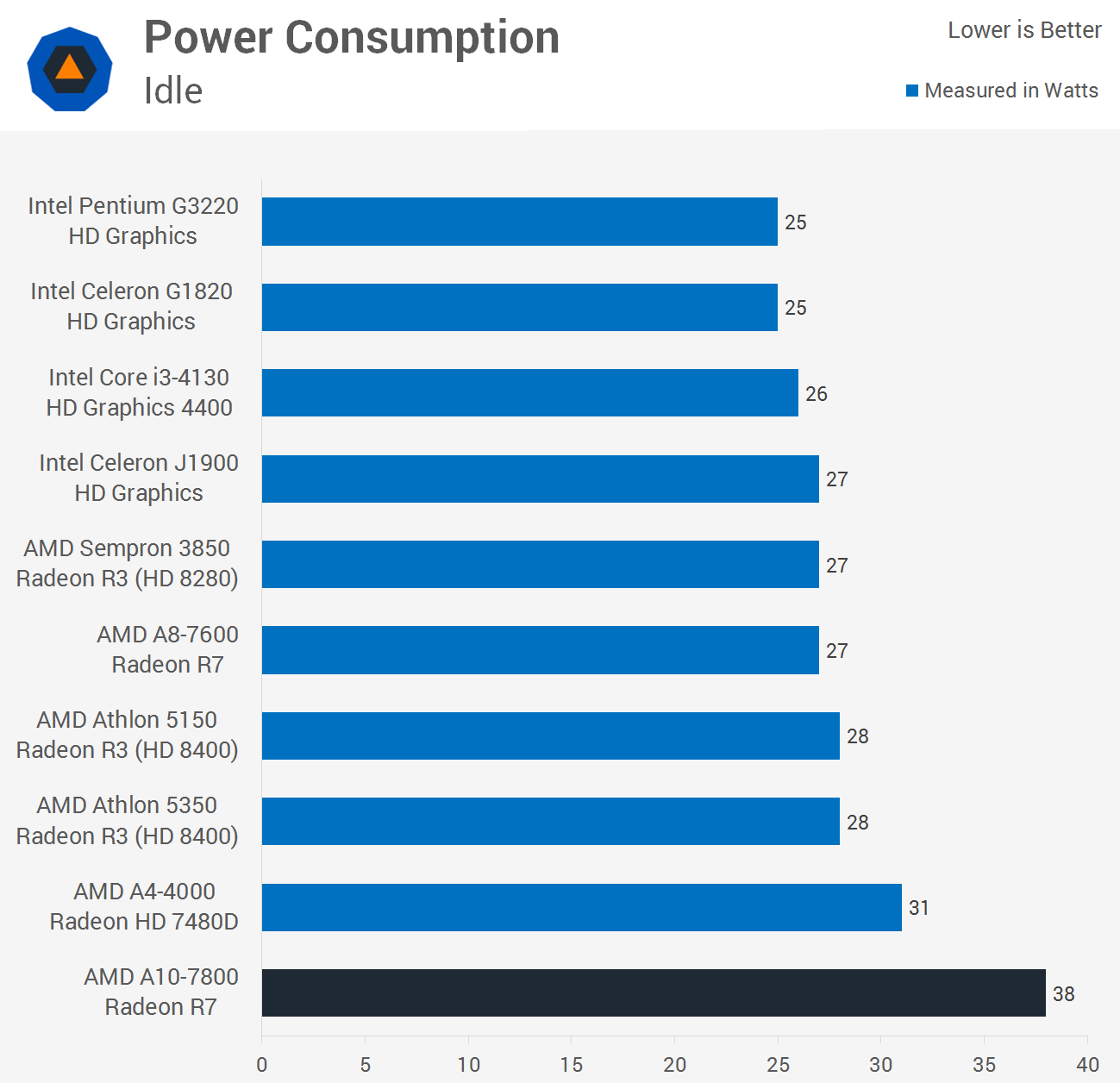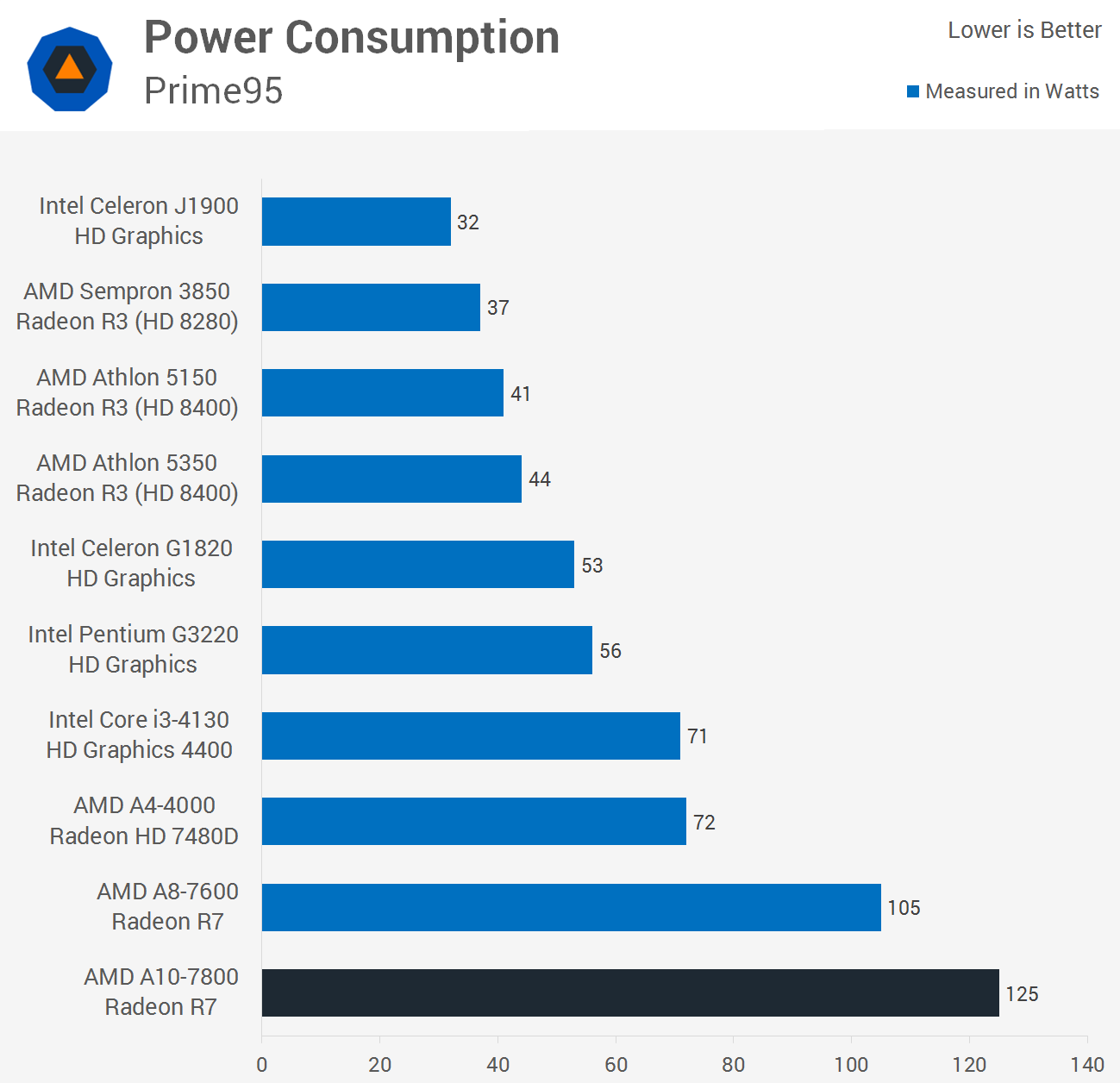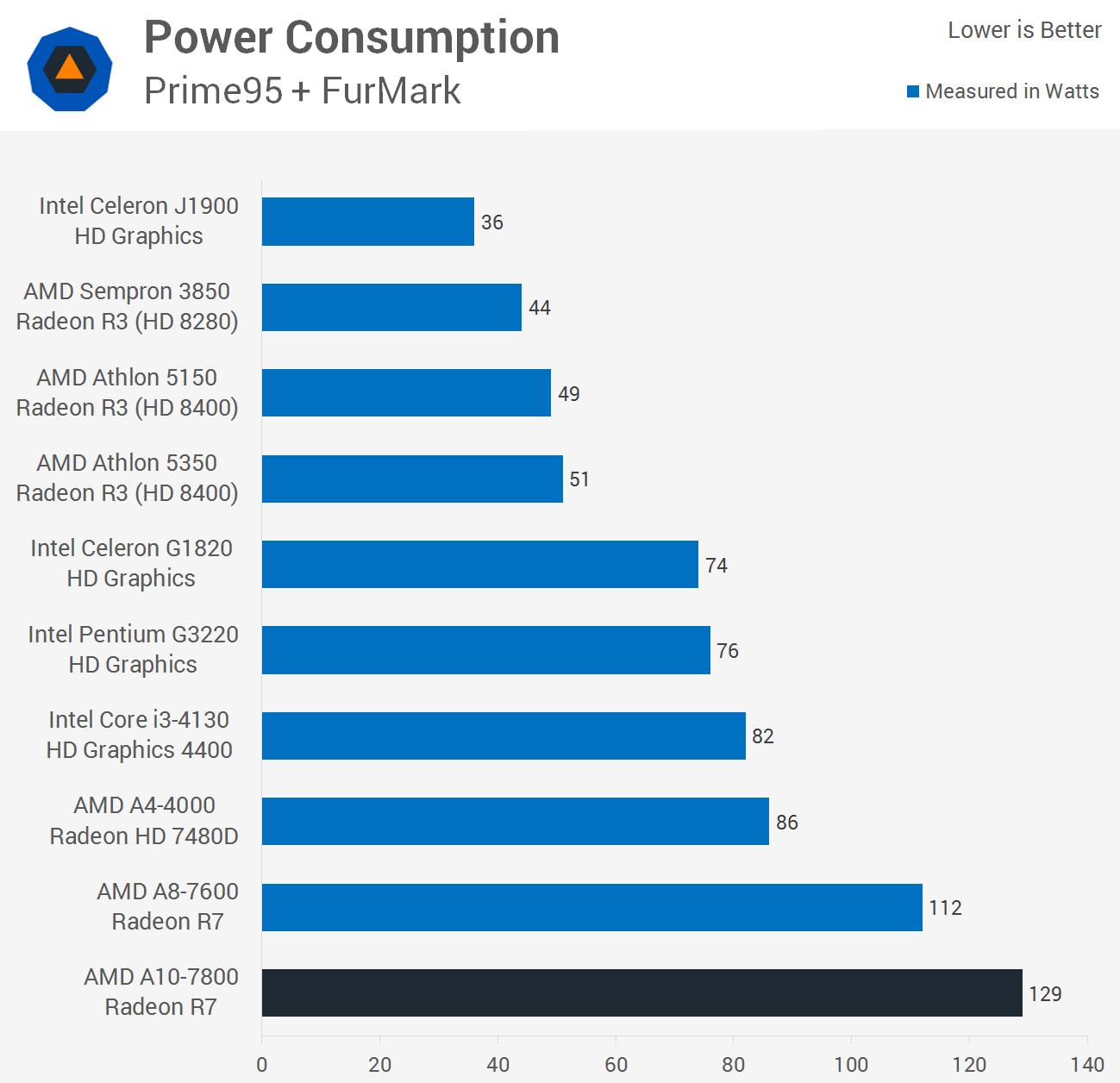Power Consumption & Wrap Up

Our A10-7800 sample bottomed out at 38 watts when idling, consuming 11 watts more than the A8-7600.

Placing all four cores under full load saw the A10-7800 system consume 125 watts, which was 19% more than the A8-7600 and 76% more than the Core i3-4130.

Stressing both the CPU and GPU pushed the total system consumption out to 129 watts, 15% more than the A8-7600 and 57% more than the Core i3-4130.
Closing Thoughts
When we first tested Kaveri in January, we concluded that it was ideal for gamers who wanted to build a budget machine without a pricey graphics card. The same is true today for the A10-7800 as it dusted the Core i3 when measuring integrated graphics performance but fell behind significantly after installing a discrete GPU.
Looking back at the application tests, the A10-7800 was on average just 1% faster than the A8-7600, while it was 19% slower than the Core i3-4130. The only applications that favored the A10-7800 over the Core i3-4130 were 7-Zip and Photoshop, while the processors delivered similar performance in After Effects.
Likewise, the HandBrake and TMPGEnc Video Master Works encoding results showed the A10-7800 to be just 1% faster than the A8-7600 and 22% slower than the Core i3-4130, and while the A10-7800's integrated graphics results were only 13% faster than the A8-7600's, it delivered at least twice the Core i3-4130's performance.
The thing is, if you can spare $90 to $120 for a Radeon R7 250 or GeForce GTX 750, then Intel's Core i3 is a better investment. The Core i3 is not only much faster for gaming when paired with a discrete graphics card but it also offers better application performance for the most part and it costs 20% less than the A10-7800.
When using a mid-range GPU for gaming, the A10-7800K was on average 28% slower than the Core i3-4130 yet it consumes 60% more power on average. Due to time constraints, we only tested the A10-7800 in 65w mode, though we didn't expect to see anything different from the A8-7600's 45w and 65w settings.
The A10-7800 is an ideal solution for low budget gamers who can't afford a Core i3 with a discrete graphics card, offering the R7 GPU at the cheapest price possible. Still, at $155 it isn't much faster than the A8-7600, which we think is the APU to watch out for at only $100. Perhaps it's time to update our buying guide...
score
Pros: The A10-7800 crams a quad-core CPU and an eight-core R7 GPU into a $155 APU that will have you playing modern games on low to medium settings.
Cons: Folks who can spare a few bucks more are better off with a Core i3 and a discrete GPU while those on a tight budget will find more value in the A8-7600.
